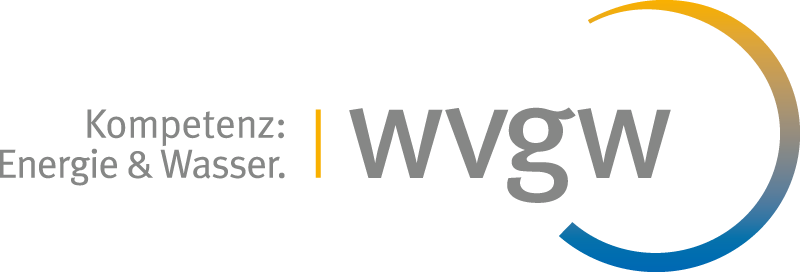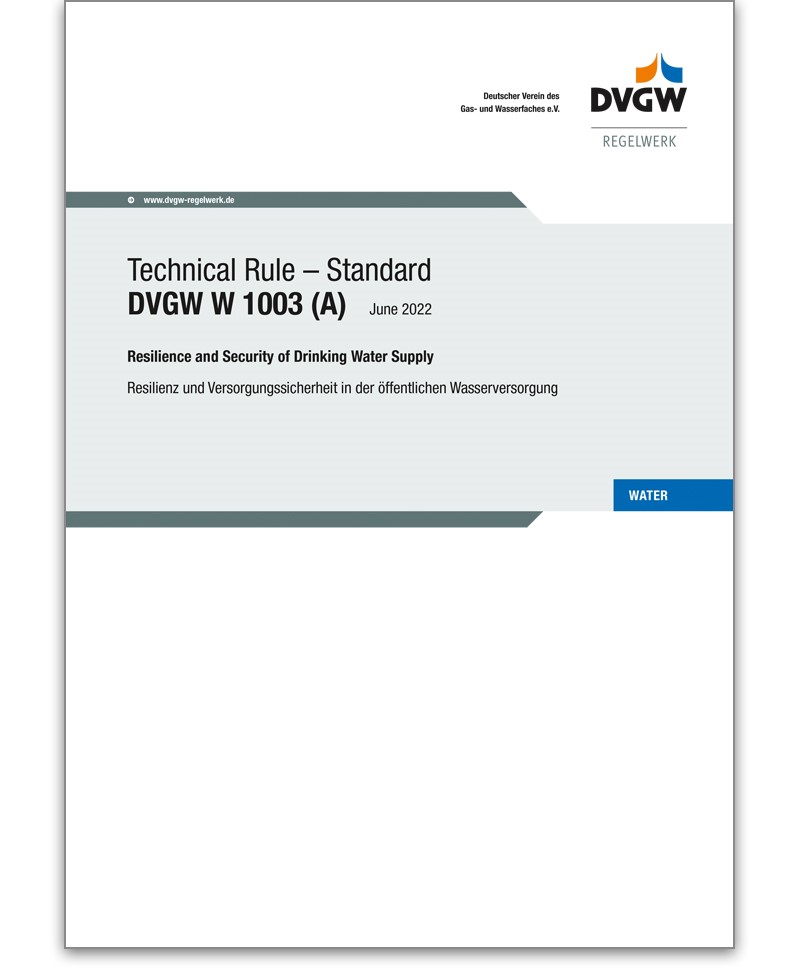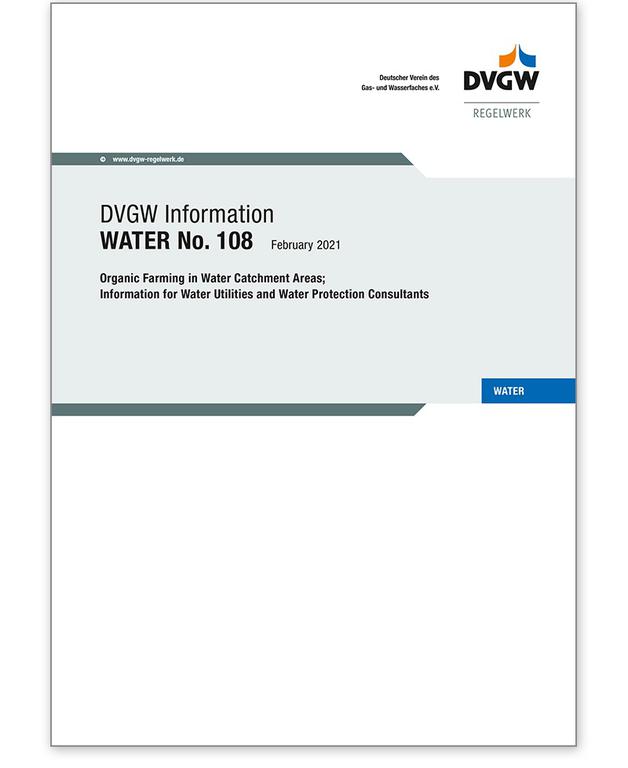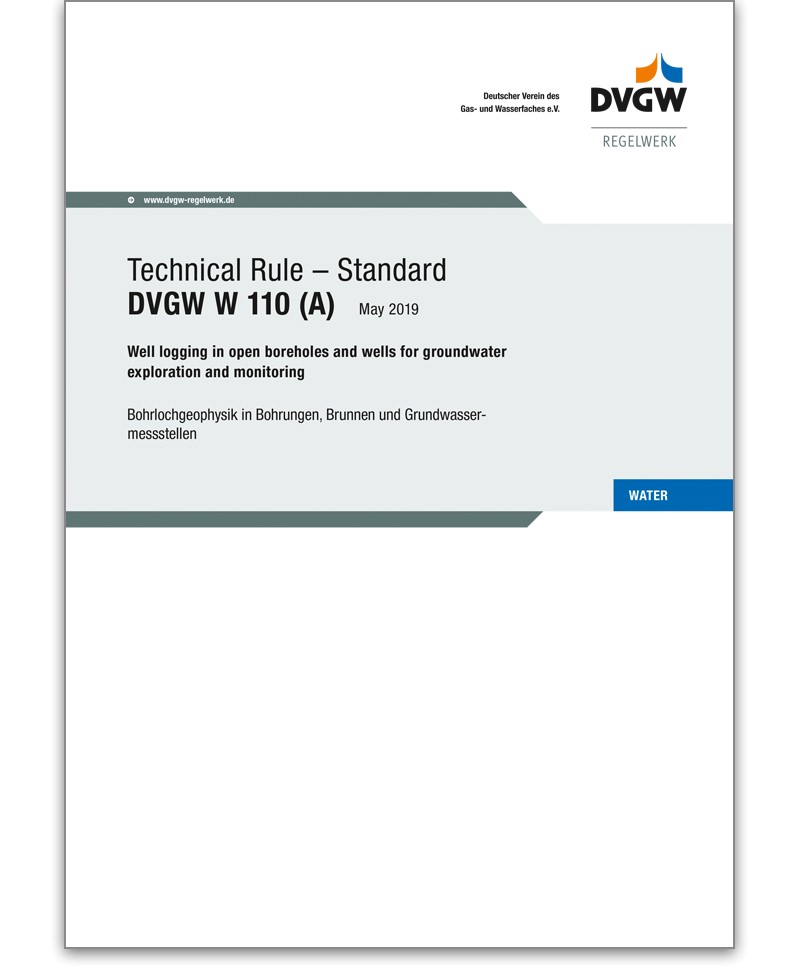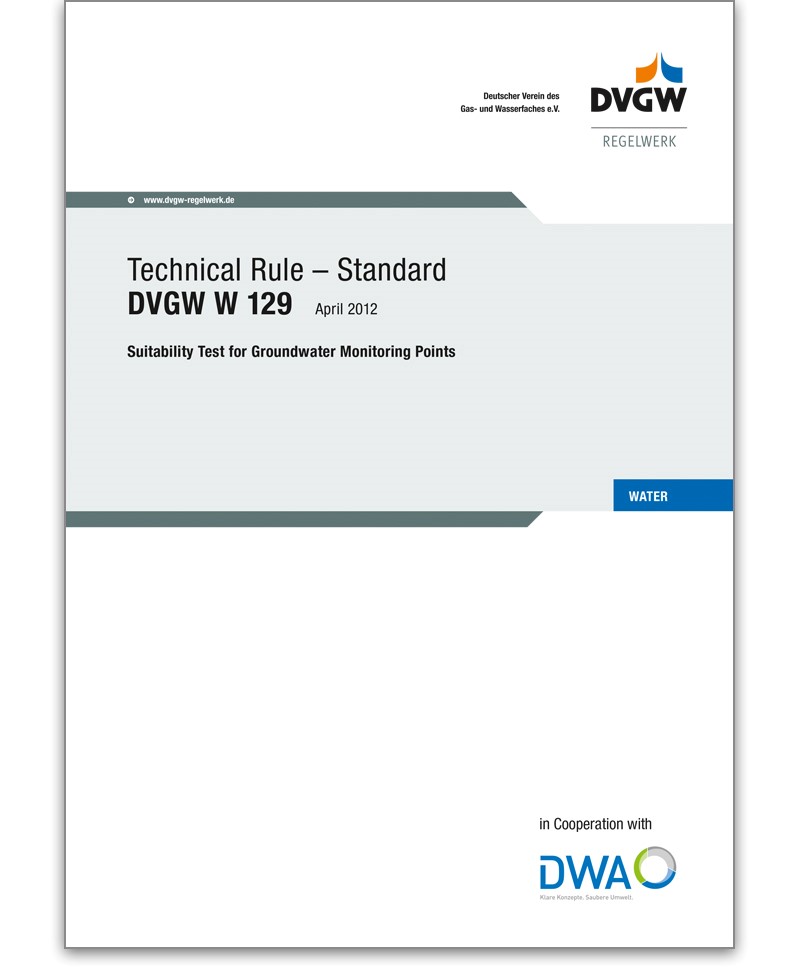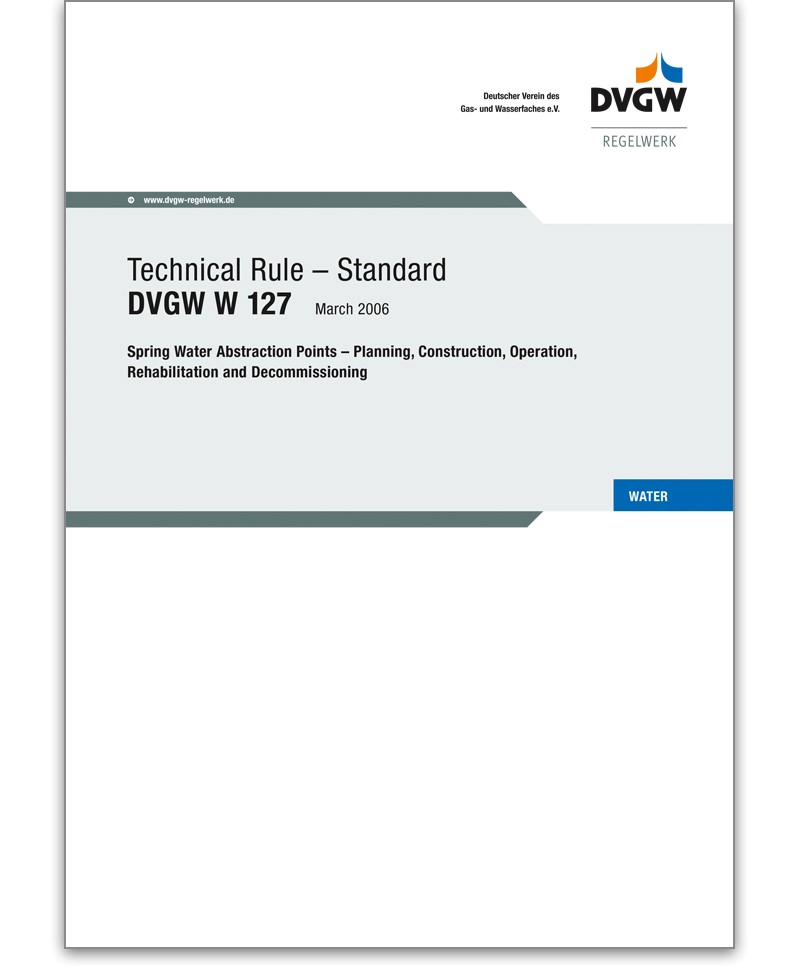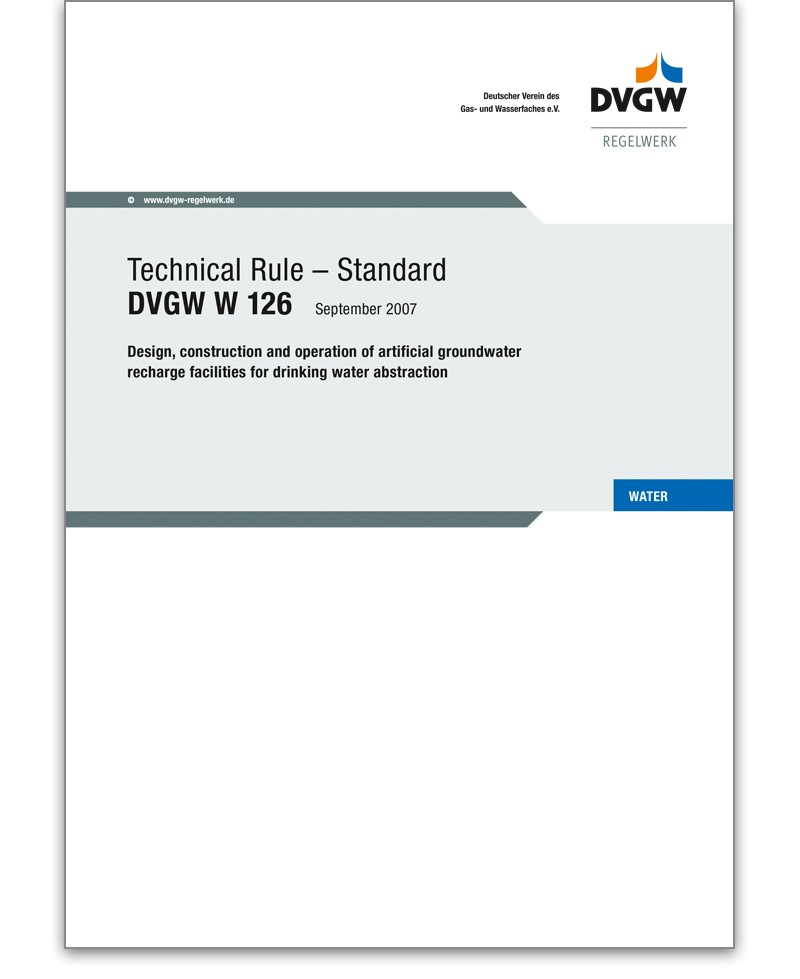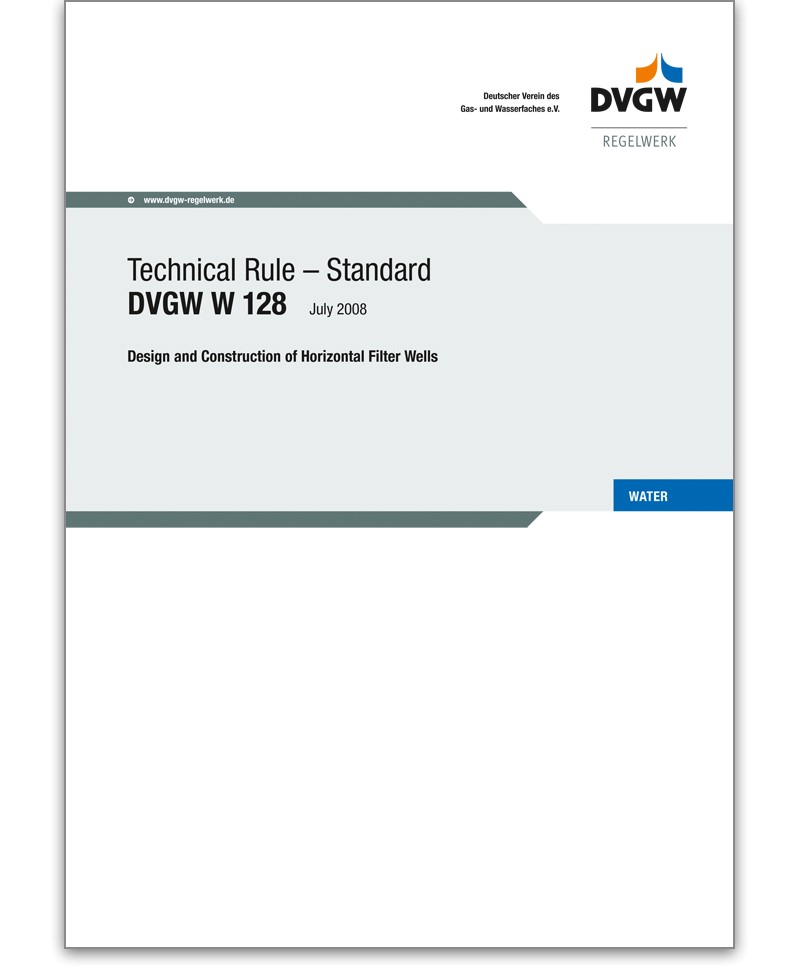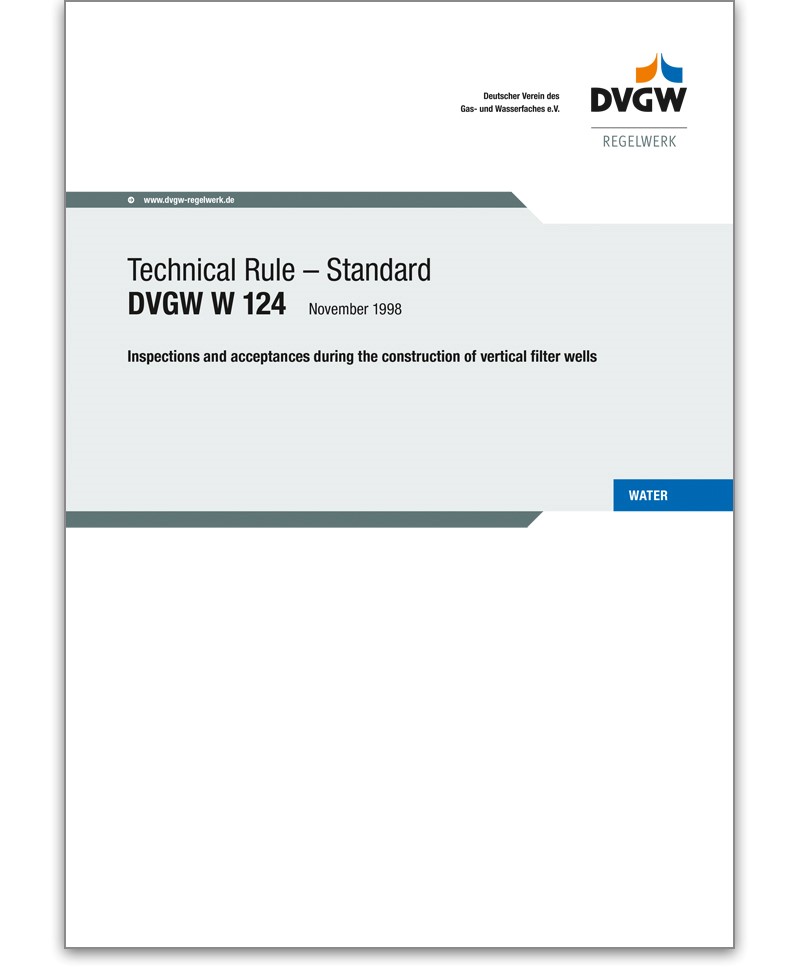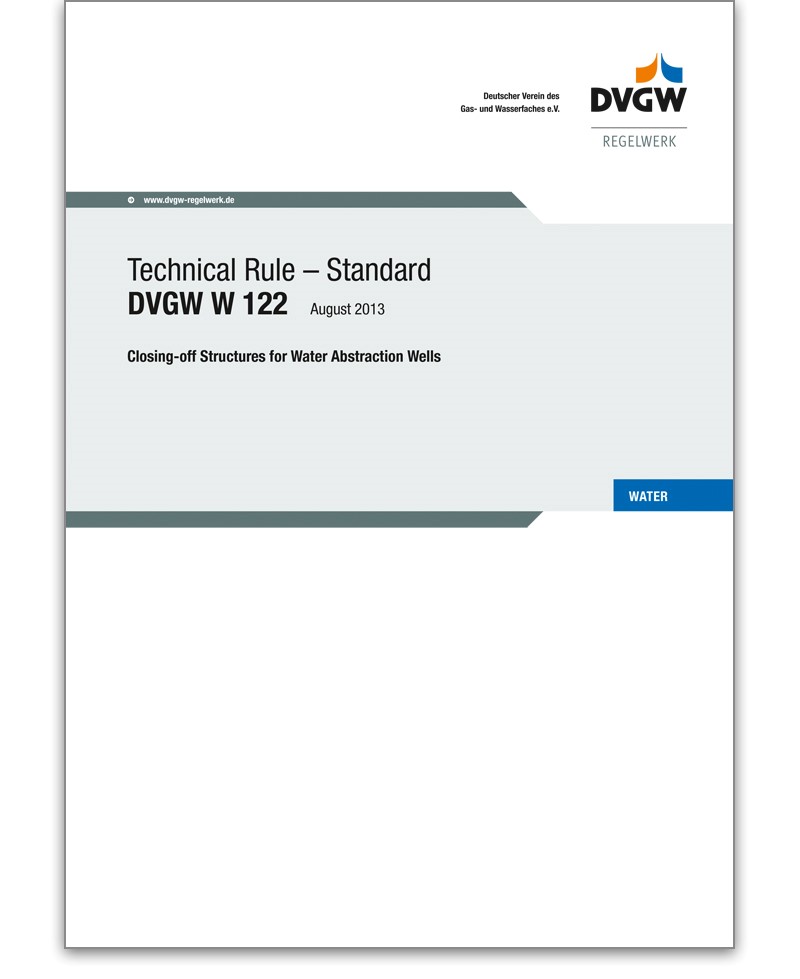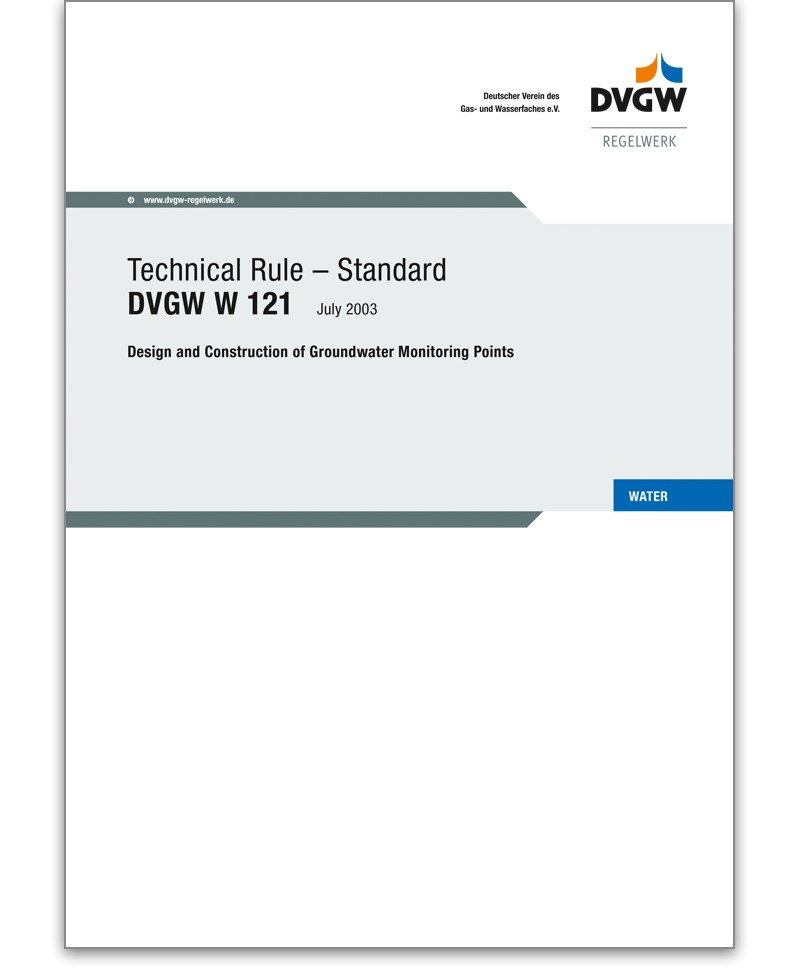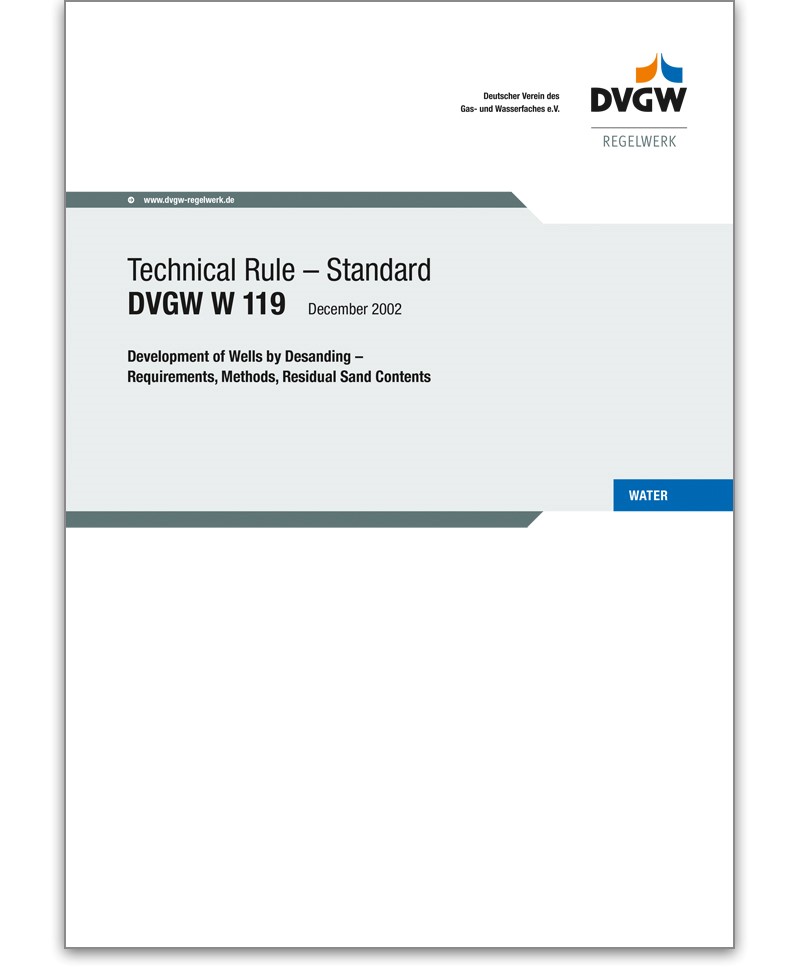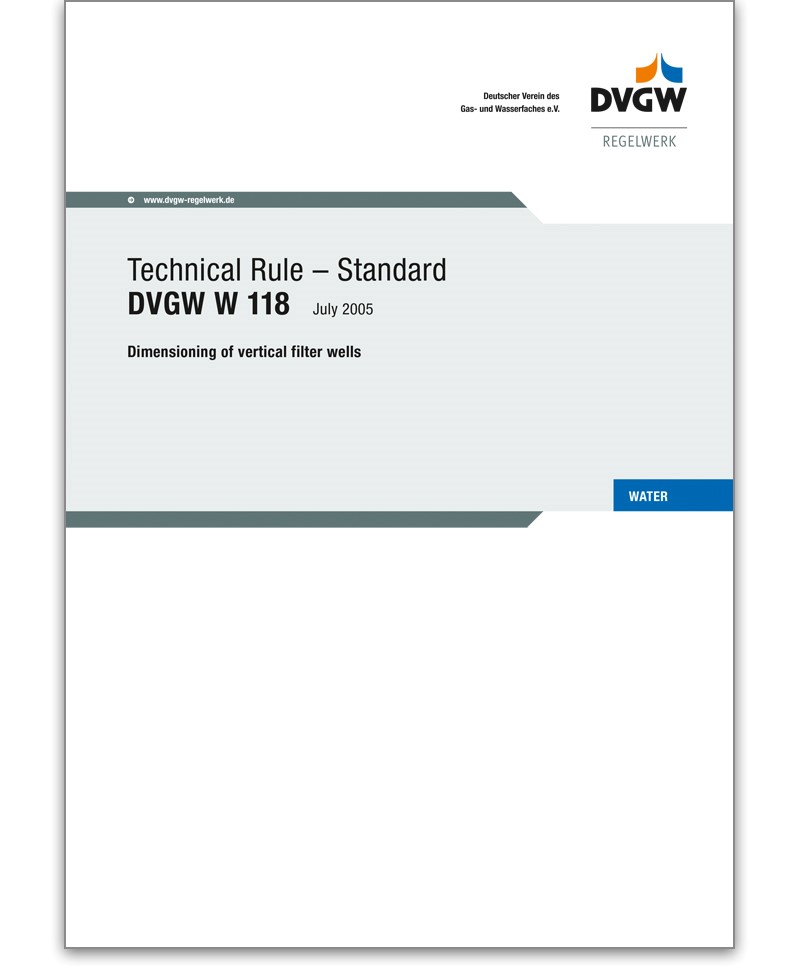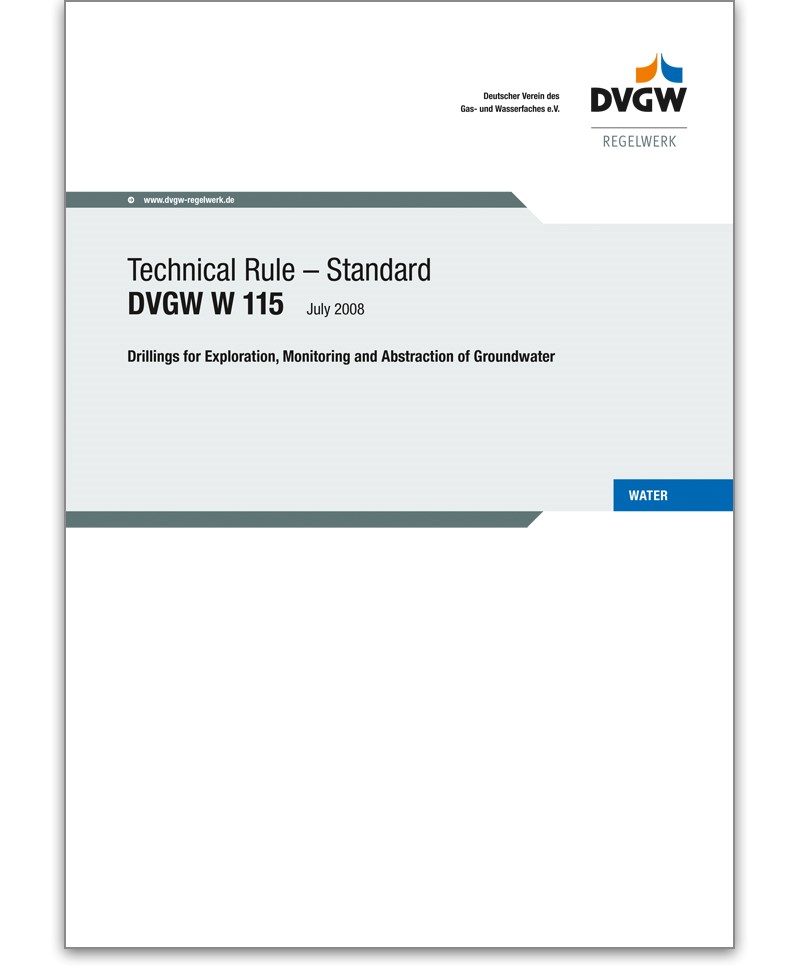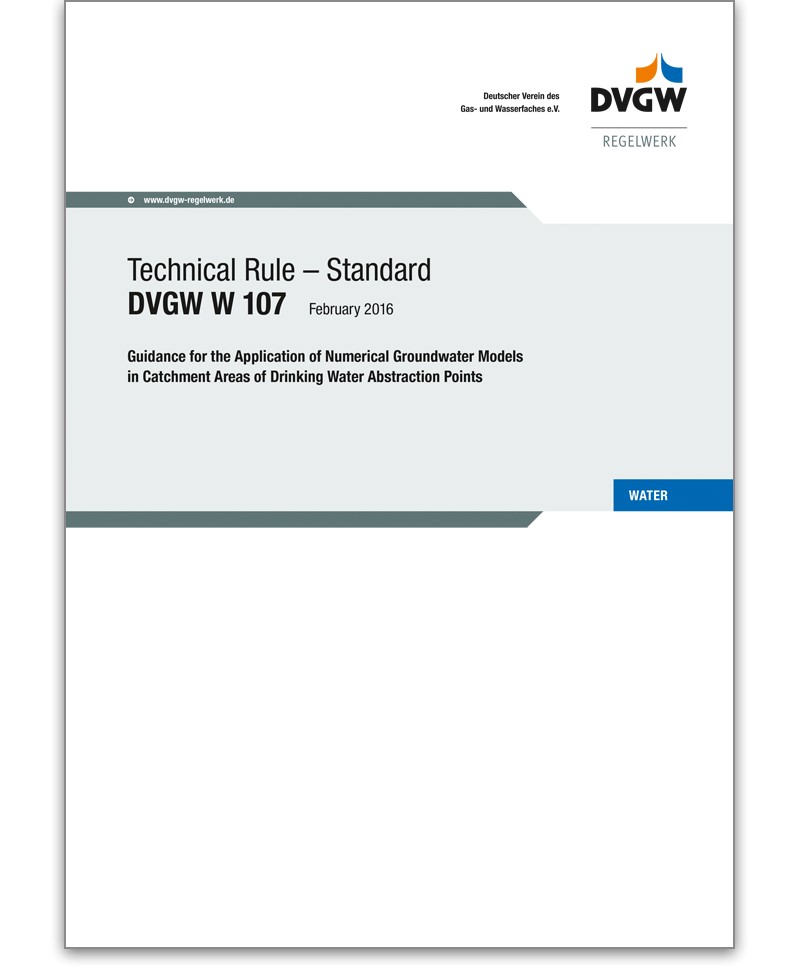Filter
–
Water abstraction
The DVGW Codes of Practice and standards in this section help to ensure the quality of drinking water resources in the long term. Engineering aspects are taken into account in this context, as are biochemical processes.
W 1003 Technical Rule- Standard 06/2022 -PDF-Datei-
79,28 €*
This Standard W 1003 relates to the piped supply of public
water under normal operating conditions. Covering the different technical
aspects and value-added steps, it provides an integral overview of how to
describe, analyse and assess the resilience and security of supply in water
supply areas.
W 110 Technical Rule - Standard 05/2019
79,28 €*
This Standard W 110 intends to offer guidance for the beneficial use of geophysical logging measurements. It aims to help the user find the optimal combination of logging techniques for a defined task as early as in the concept phase of borehole surveys in vertical and, where due to design constraints, partially also in horizontal filter wells as well as in groundwater monitoring points. It is by no means a tool for evaluatingand interpreting geophysical measurements, a field that in the course of the last decade has evolved into an almost autonomous scientific discipline and, therefore, should be reserved for the relevant experts toengage in.This Standard applies to the design and execution of geophysical measurements in boreholes for groundwater exploration and abstraction in unconsolidated and consolidated rock, including well and groundwater monitoring point surveys. Drillings and probes used in near‑surface geothermal systems have a Special position in this context.
W 130 Technical Rule - Standard 10/2007 -PDF file-
79,28 €*
This Code of Practice W 130 serves as a basis for the regeneration of wells and groundwater monitoring points. Ageing processes frequently compromise water well performance, adversely affecting, in turn, a wells service life and economic mode of operation. Well operators therefore face the dual challenge of having to identify the most appropriate regeneration methods for each specific case and being able to evaluate the success of the measures taken. Eventually, a direct capacity increase will ensure the economically efficient operation of a well over the long term only when combined with sustainably successful measures. Any well regeneration measures will, therefore, depend on the nature and scope of ageing and on the constructional condition of the well as well as on groundwater protection requirements. This Code of Practice describes the current requirements on the technically safe and hygienically flawless implementation of well regeneration measures, points out the causes of and explains how to identify well ageing processes, among other things, and offers suggestions on how to delay them. It additionally describes the application options and limits of both mechanical and chemical regeneration procedures and/or methods. By applying this Code of Practice, well operators and contractors alike will be able to record and trace the results achieved by the regeneration measures and evaluate their success, from the planning to the implementation and on to the final phase.
W 128 Technical Rule - Standard 07/2008 -PDF file-
62,03 €*
This Code of Practice W 128 provides a basis for the drilling and dimensioning of horizontal boreholes and the construction of horizontal filter wells. This Code of Practice does not discuss cut‑and‑cover methods ‑ protected by e.g. pit lining ‑ that are sometimes used in the field.
W 124 Technical Rule - Standard 11/1998 -PDF file-
39,92 €*
The technical bulletin on hand makes recommendations for these inspections and acceptances of the awarded drilling and well construction work, which have been compiled on the basis of the set of technical rules and which shall be applied on a case‑by‑case basis. It has become apparent that in order to avoid misunderstandings and costly rework, any acceptances and inspections shall have to be agreed beforehand between the parties involved within the scope of the bill of quantities/construction contract, in particular if the specialist company has to make available equipment and facilities at certain dates or work steps. The selection of the acceptances and inspections to be performed in the individual case shall be guided by the hydrogeological conditions and shall be in line with purpose, type and scope of the structure and the materials used.
W 122 Technical Rule - Standard 08/2013 -PDF file-
79,28 €*
This Code of Practice W 122 comprises all closing‑off structures for groundwater developments by vertical and horizontal filter wells. The new version incorporates operational issues insofar as they have an immediate effect on the requirements placed on the planning and construction of closing‑off structures.
W 121 Technical Rule - Standard 07/2003 -PDF file-
62,03 €*
This Code of Practice W 121 serves as a basis for designing and constructing groundwater monitoring points.The design and construction of groundwater monitoring points is as important for groundwater Monitoring purposes as it is for precautionary, sustainable groundwater protection. Only correctly designed, competently constructed and reliably operating monitoring points can ensure meeting the current requirements of groundwater quality monitoring. A long service life, safe functioning and, in particular, safe sealing,count among some of the important quality features of groundwater monitoring points.This Code of Practice describes how to competently design and construct groundwater monitoring Points for monitoring the quantity and quality of groundwater. It describes the quality requirements for the construction, the building supervision and the acceptance of groundwater monitoring points.
W 119 Technical Rule - Standard 12/2002 -PDF file-
62,03 €*
This Technical Standard W 119 serves as basis for the development of wells by desanding. Sand contents arising during well operation can have a disruptive effect. The consequences can for instance be sanding up of the well, destruction of the submersible motor pumps or disruptions in water treatment. In addition, longlastingsand production of a well may lead to soil settlements, which in turn can have a negative Impact on the entire construction.The technical standard defines criteria for assessing the sand content of raw water and provides guide values for a (still to be approved) residual sand content during the development and operation of wells. The requirement of sandfree water (technical absence of sand) raised in DIN 18302 will in particular be explained in more detail.In addition, experts at water utilities, drilling and well construction companies, engineering offices, pertinent authorities and scientific institutions in charge of planning and construction work are provided with aids for the development of wells by desanding.
W 118 Technical Rule - Standard 07/2005 -PDF file-
62,03 €*
This Code of Practice W 118 serves as basis for the hydraulic and mechanical dimensioning of wells. The references listed represent the minimum requirements on the dimensioning of vertical filter wells.Well dimensioning shall be performed so that a hydraulically effective, functionally reliable and economic water abstraction from the aquifer is guaranteed in the long run. At the same time, apart from the Basic hydrogeological parameters, the operating company's technical specifications and the well construction technology are of importance. A careful selection from the various options in well dimensioning can often minimise problems during later well operation, for instance ageing phenomena.For the planning specialists in drilling and well construction companies, engineering offices and water utilities, the code of practice shall provide assistance for the hydraulic and static dimensioning of vertical filter wells.
W 115 Technical Rule - Standard 07/2008 -PDF file-
79,28 €*
This Code of Practice W 115 provides information on the usual drilling methods and their applications. In addition, it contains references to possible faults during water development work, which may have consequences for operation, maintenance (regeneration, rehabilitation) and dismantling. As a summarising abstract it shall serve anyone involved with drilling operations as starting point for project-related considerations.
W 113 Technical Rule - Standard 03/2001
62,03 €*
Knowledge of the grain size distribution of water‑conducting granular soil is of great importance for the construction of wells and for the description of the hydrogeological conditions. It is in particular possible to determine the required gravel‑pack diameter in a well's filter section on the basis of the cumulative grain size curve and the grain size distribution curve. In addition, it is possible to derive estimated data for the coefficient of hydraulic conductivity and the porosity of the examined soil sample. Results of the DVGW Research project Examinations on the stability and clogging of sand and gravel filters during drilling (DVGW 1982) have been included in the here described procedure to determine the required gravel‑pack diameter. Compared to the Technical Standard W 113 Determination, representation and evaluation of the grain size distribution of water‑conducting granular soils for geohydrological examinations and for the construction of wells from the year 1983, different practical possibilities for determining the required gravel‑pack diameter and the hydrogeological parameters coefficient of hydraulic conductivity and porosity are demonstrated. Apart from determining the grain size distribution, details on its representation and especially on its evaluation have been provided.
